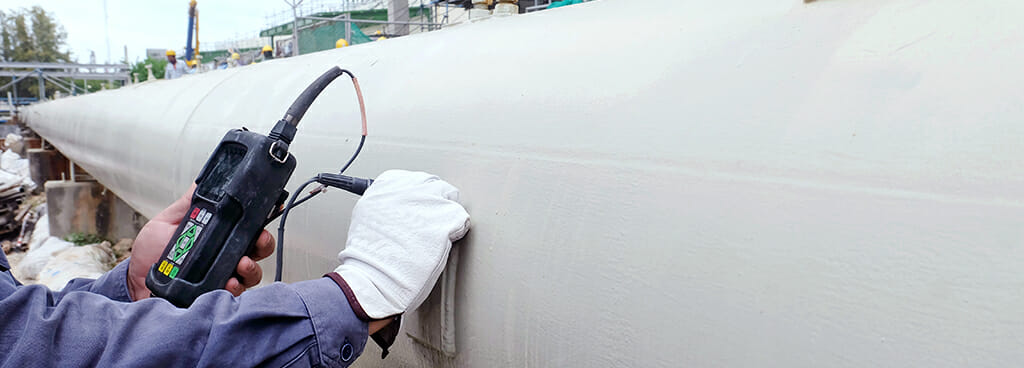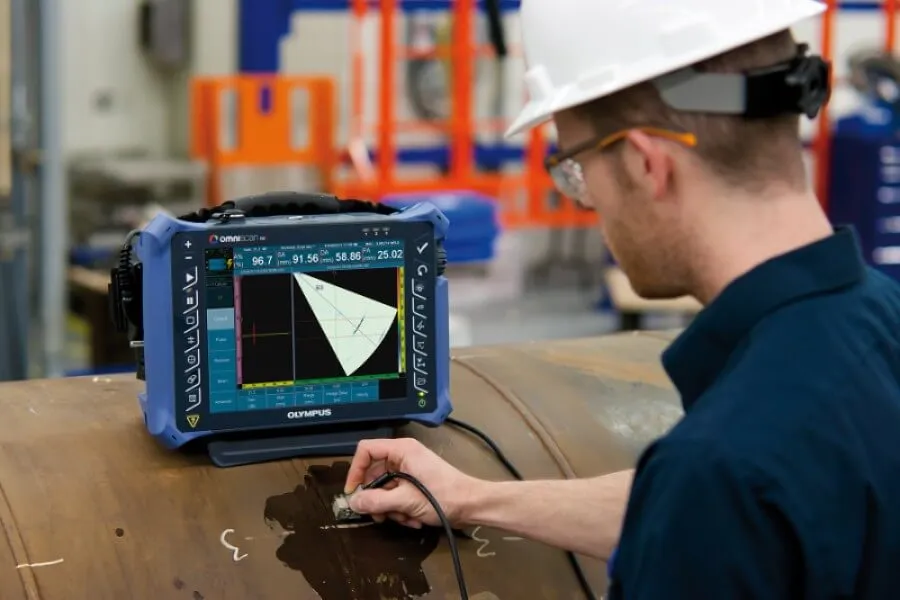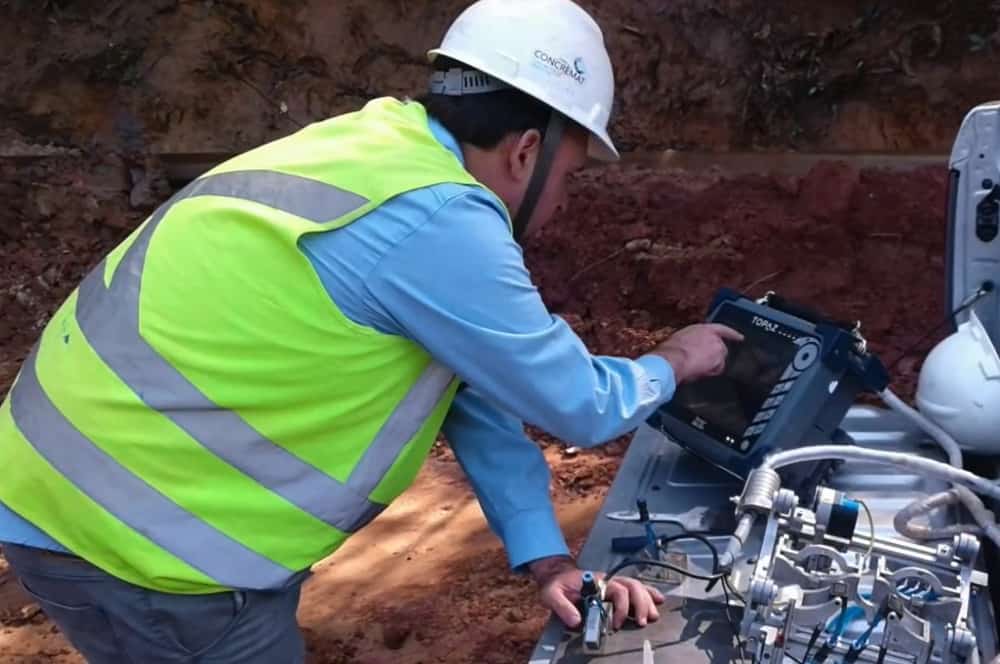Table of Content
- What is Ultrasonic Testing?
- Frequency of Ultrasonic Testing
- Principle of Ultrasonic Testing
- Different Types of Ultrasonic Testing Methods
- Advantages of each Type of Ultrasonic Testing
- Factors to consider while selecting the Ultrasonic Testing Method
- Key Takeaways
Nothing is de novo in nature. Bats have adapted to use ultrasonic sounds for detecting barriers, and dolphins use ultrasonic clicks to communicate and hunt in murky waters. Nature’s ingenious use of ultrasonic waves is a source of inspiration for designing new technologies that enhance our lives.
Read on to discover how humans are harnessing the power of ultrasonic waves for non-destructive testing…
What is Ultrasonic Testing?

Ultrasonic Testing, commonly called Ultrasonic Examination uses ultrasound waves to impinge a subject under testing. The ultrasound waves distort on interaction with deformities or defects within the material, structure, or machinery under test and are received via the receiver in the NDT ultrasonic testing equipment. This provides a thorough analysis of the defects present throughout the structure without any surface or sub-surface limitations.
Ultrasonic Examination is a feasible choice for many applications because of these benefits. One exemplary application of ultrasonic testing is the inspection of welds in critical components like pipelines or Pressure Vessels. NDT ultrasonic testing is instrumental in ensuring the structural soundness of these welded joints, as it can reveal imperfections such as cracks, porosity, or inclusions that might compromise their performance.
Frequency of Ultrasonic Testing
The frequency of ultrasonic testing, typically ranging from 0.1 MHz to 25 MHz, allows for a meticulous examination of materials, making it an indispensable tool for NDT ultrasonic testing. This method operates on the principle that sound waves propagate through the material and reflect when they encounter changes in the material's properties or internal defects.
Ultrasonic Testing Inspection encompasses various techniques, including pulse-echo testing, phased array ultrasonics, and time-of-flight diffraction (TOFD), each tailored to specific applications within the realm of NDT ultrasonic testing. These methods extend the capabilities of ultrasonic examination and offer distinct advantages for evaluating the quality and reliability of diverse engineering components.
Principle of Ultrasonic Testing
Ultrasonic testing is based on the principle of sound wave propagation. An Ultrasonic Transducer generates high-frequency sound waves (ultrasonic waves) that travel through the material being tested. When these waves encounter boundaries between different materials or internal defects like cracks or voids, some of the energy is reflected in the transducer.
By analyzing the time, it takes for these echoes to return and their amplitude, technicians can evaluate the material's condition and detect any flaws. The Ultrasonic Principle is founded on the behavior of high-frequency sound waves in materials. Ultrasonic waves travel through solids, liquids, and gases and exhibit characteristics like reflection, refraction, and diffraction when they encounter interfaces or defects. The ability to analyze the echoes produced by these interactions is the essence of ultrasonic testing, making it a powerful tool for Non-destructive Evaluation in various industries, including engineering and materials science.
Different Types of Ultrasonic Testing Methods

Ultrasonic testing encompasses a diverse array of methods for assessing the integrity of materials and structures, constituting a cornerstone of NDT (Non-Destructive Testing). These methods utilize high-frequency sound waves, often referred to as ultrasonic waves, to investigate the internal structure of materials and identify defects or discontinuities. Here are some of the common ultrasonic testing methods:
1. Pulse-Echo Testing (Ultrasonic Test):
Pulse-echo testing typically involves a transducer, a pulse generator, and a receiver. The Ultrasonic Transducer emits ultrasonic pulses, and the receiver captures the returning echoes. This method is widely used for Thickness Measurements, weld inspections, and flaw detection in a wide range of materials, including metals, plastics, and composites, making it an essential part of ultrasonic testing NDT.
2. Phased Array Ultrasonics (PAUT):
Phased Array Ultrasonics Testing employs an array of ultrasonic elements, a phased array controller, and specialized software. The controller electronically adjusts the timing and amplitude of each element. PAUT is highly versatile, making it suitable for inspecting complex geometries, welds, and components with varying thicknesses, contributing significantly to Ultrasonic Inspection in NDT.
3. Time-of-Flight Diffraction (TOFD - Ultrasonic Inspection):
TOFD systems typically include two transducers placed on opposite sides of the inspected area, a data acquisition unit, and software for data analysis. TOFD is widely used in the Inspection of Welds, pressure vessels, and pipelines for precise sizing and positioning of cracks and other defects, offering valuable contributions to ultrasonic NDT testing.
4. Immersion Testing (Ultrasonic NDT Testing):
Immersion testing setups consist of a tank, a transducer submerged in a liquid couplant, and a data acquisition system. It is employed for inspecting small components like aerospace parts, medical devices, and electronics, ensuring high sensitivity and precise imaging, thereby enhancing ultrasonic NDT Inspection.
5. Guided Wave Testing (Ultrasonic Testing Inspection):
Guided wave testing systems include a transducer and waveguide structure, often utilizing low-frequency guided waves. This method is ideal for inspecting long stretches of pipes and structures, particularly in industries like the Oil and Gas Industry, to detect corrosion, erosion, and other defects over large areas, significantly contributing to ultrasonic NDT inspection.
6. Long-Range Ultrasonic Testing (LRUT - Ultrasonic NDT Testing):
LRUT uses a specialized Ultrasonic Transducer and signal-processing equipment to send and receive ultrasonic waves over long distances. LRUT is valuable for inspecting pipelines, storage tanks, and large structures to identify changes in wall thickness and the presence of corrosion or defects, playing a pivotal role in ultrasonic NDT inspection. These Ultrasonic Testing Methods, along with their associated equipment, cater to a wide range of applications and materials, ensuring the safety and quality of engineering components in the context of ultrasonic testing inspection and NDT.
Advantages of each Type of Ultrasonic Testing
Each type of Ultrasonic Testing Technique comes with its distinct pros and cons. Some of the benefits of some popular Ultrasonic Testing Techniques are as follows:
1. Pulse-Echo Testing (Ultrasonic Test):
- Versatility (Ultrasonic Test): Pulse-Echo testing is one of the most versatile testing processes.
- It applies to multiple material types ranging from plastic to metal and even composites.
- This adaptability makes it a fundamental technique in UT.
- It is widely used for Thickness measurements, Weld Inspections, and flaw detection.
- The ability to measure material thickness and detect internal defects has established it as a cornerstone in the field of NDT.
- High Precision (Ultrasonic Test): Pulse-echo testing provides precise measurements, making it ideal for applications where accuracy is critical.
- It offers inspectors a reliable way to detect and size internal defects, ensuring the safety and quality of engineering components in various industries.
2. Phased Array Ultrasonics (PAUT):
- Adaptability (Ultrasonic Test): What sets PAUT apart is its adaptability.
- With an array of ultrasonic elements and electronic control, PAUT can steer and focus the ultrasonic beam electronically.
- This dynamic control allows inspectors to tailor the inspection to varying geometries and material properties.
- It's particularly valuable for complex structures, Weld Inspections, and components with varying thicknesses.
- Efficiency (Ultrasonic Test): PAUT can significantly reduce inspection time due to its ability to inspect larger areas in a single scan.
- This feature enhances productivity and efficiency, making it a preferred choice for industries that require high-throughput inspections.
3. Time-of-Flight Diffraction (TOFD):
- Precise Sizing (Ultrasonic Test): TOFD excels in precise sizing and positioning of defects.
- Its ability to measure diffracted waves generated by the edges of flaws makes it a go-to method for inspecting welds, Pressure Vessels, and pipelines.
- The precise sizing of cracks, lack of fusion, and other defects are some of its standout features.
- Versatile Applications (Ultrasonic Test): TOFD is known for its adaptability to various materials and inspection scenarios.
- It can effectively assess both thin and thick materials, making it a versatile technique with a wide range of applications.
4. Immersion Testing:
- High Sensitivity (Ultrasonic NDT): Immersion testing is synonymous with high sensitivity.
- This method, involving submersion in a liquid bath, is employed for inspecting small components like aerospace parts, medical devices, and electronics.
- Its sensitivity and precise imaging capabilities enhance the quality of Ultrasonic Testing Inspection in applications where accuracy is paramount.
- Critical for Small Components (Ultrasonic NDT): The high sensitivity of immersion testing is invaluable when inspecting small and intricate components where even minor defects can have significant consequences.
- It ensures that these critical components meet stringent quality standards.
5. Guided Wave Testing:
- Long-Range Inspection (Ultrasonic Testing Inspection): UT with guided waves is ideal for inspecting long stretches of pipes and structures.
- Low-frequency guided waves travel along the structure, enabling the detection of corrosion, erosion, and other defects over large areas.
- This makes it a practical choice for industries like the Oil and Gas Industry.
- Effective Screening Tool (Ultrasonic Testing Inspection): Guided wave testing serves as an effective screening tool for long pipelines and structures, allowing inspectors to identify areas that may require further, more detailed inspection.
6. Long-Range Ultrasonic Testing (LRUT):
- Inspecting Large Structures (Ultrasonic NDT Testing): LRUT's claim to fame is its ability to inspect pipelines, storage tanks, and large structures over substantial distances.
- Specialized transducers and signal processing equipment are used to send and receive ultrasonic waves, making it valuable for identifying changes in wall thickness and the presence of corrosion or defects.
- Cost-Effective (Ultrasonic NDT Testing): LRUT can significantly reduce inspection costs by covering extensive areas in a single scan, reducing the need for labor-intensive and time-consuming inspections.
- Each UT method shines in its own right, and the choice of method depends on various factors, including material properties, defect types, calibration, and surface conditions.
- By capitalizing on the unique features of each UT method, inspectors can ensure the safety and quality of engineering components across diverse industries, from aerospace and manufacturing to the Oil and Gas Industry.
Factors to consider while selecting the Ultrasonic Testing Method

Selecting the most suitable Ultrasonic Testing Method is not only about understanding the distinctive features but also about matching those features to the specific inspection requirements. Here are some additional considerations to keep in mind:
1. Cost-Effectiveness
Some UT methods may be more cost-effective for certain applications. Evaluating the overall cost of inspection, including equipment, labor, and downtime, is crucial.
2. Regulatory Compliance:
Industries often have specific Standards and Regulations for NDT. Ensuring that the chosen UT method complies with these standards is essential.
3. Environmental Conditions:
Consideration of environmental factors such as temperature, pressure, and the presence of coatings or contaminants is necessary for successful inspections.
4. Data Analysis:
Some Ultrasonic Testing Methods may provide more data for in-depth analysis, while others offer quick pass/fail results. The level of detail required in the inspection should guide method selection.
5. Operator Training:
The expertise and training of the inspection personnel play a critical role in method selection. Some UT methods may require specialized NDT Training and Certification.
6. Maintenance and Calibration:
Regular maintenance and calibration of equipment are essential to ensure the reliability and accuracy of UT inspections. Different methods may have varying requirements in this regard.
By carefully considering these factors and the distinctive features of each UT method, professionals can make informed decisions that result in effective and reliable inspections, ultimately contributing to the safety and quality of engineering components.
Key Takeaways
- UT offers a range of techniques, such as pulse-echo testing, Phased Array Ultrasonics Testing, time-of-flight diffraction, immersion testing, guided wave testing, and long-range ultrasonic testing, each tailored for specific applications and materials.
- Advancements in Ultrasonic Testing Technology and instrumentation have made inspections more accurate, efficient, and accessible, while ongoing research points towards a future where automation, robotics, and Artificial Intelligence further enhance the capabilities of ultrasonic testing.










